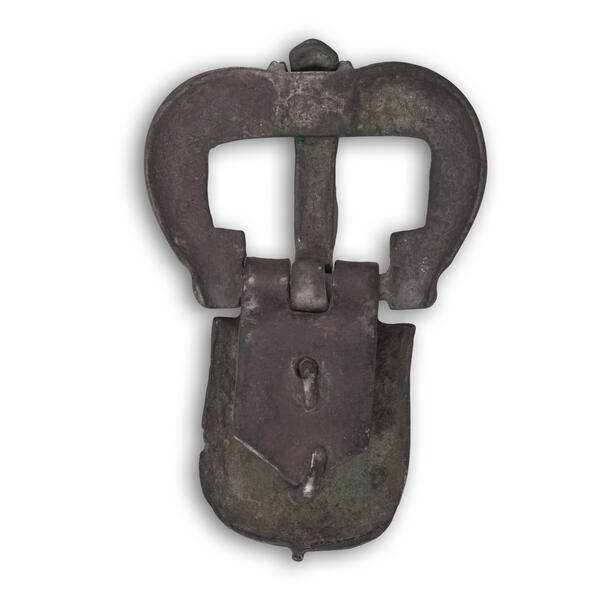The museum’s collection houses a detail of a male composite belt, dated to the 7th century and related to the Kolochin archaeological culture, whose bearers are considered by scholars to be early Slavs. Such decorations, equipment, and armor made from silver and brass were typically afforded by the elite of that time: chiefs, nobles, and warriors. The artifact is part of the Novosudzhansky treasure trove. Most of it was discovered in 1947 by a local tractor driver Vitaly Slastenov during spring agricultural work.
The treasure trove consisted of 2 bronze finger fibulae, 8 silver wire and 12 spiral temple rings, a bronze wire torque, 28 bronze and silver tube beads, 12 bronze and silver round pendants, 6 pairs of trapezoidal pendants, 3 bronze chains, 4 amber beads, and a silver belt set. Most of the finds are displayed in the Kursk State Regional Museum of Archaeology, while some items are kept in the Kursk Regional Museum of Local Lore and the Sudzha Local History Museum.
From 2010 to 2012, members of the Middle Seym expedition, led by Oleg Alexandrovich Radyush, were able to clarify the place of origin of new finds. The finder, unaware of the 1947 hoard, provided a description of the location that perfectly matched the site where that hoard was discovered. The new items entered the collections of the Kursk Regional Archaeological Museum in 2010, including two silver buckles, three rectangular silver belt plates, two silver belt tips, three silver plates in “heraldic” style, two bronze trapezoidal pendants, and three bronze tube beads.
The rectangular and heraldic plates, trapezoidal
pendants, and tube beads are identical in size, style, and characteristic
details to the items of the Novosudzhansky treasure trove of 1947, which
confirms the finder’s information. According to him, all the items were found
in the late 1990s and were kept by him before being transferred to the museum.



